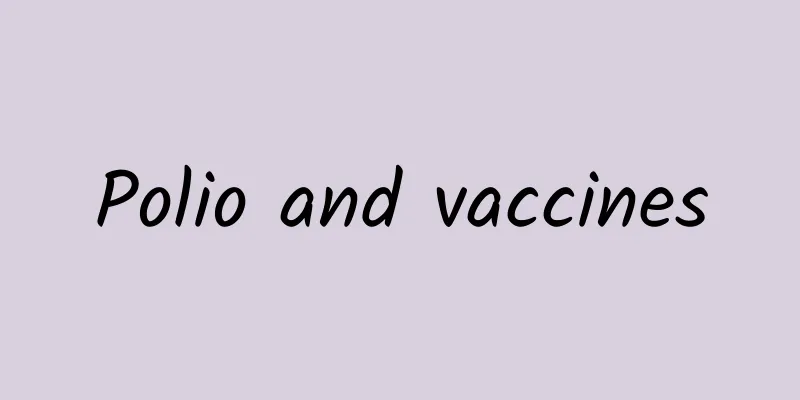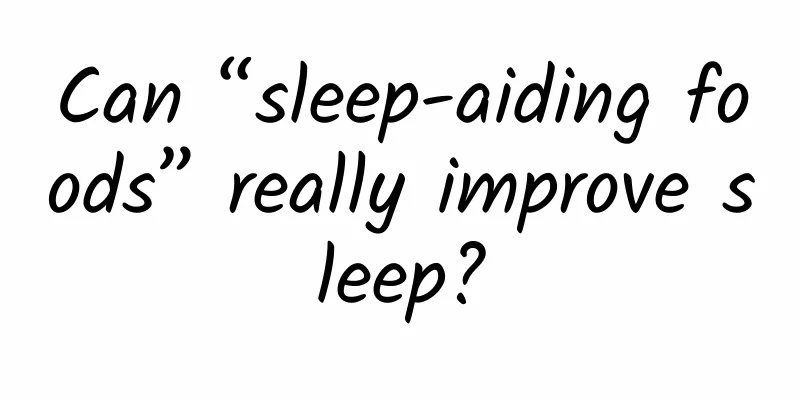Polio and vaccines

|
A few days ago, I saw some netizens discussing: Is it safer to take a sugar pill for the third polio vaccine or to pay for the injection at your own expense? I felt a sense of trance when I saw this topic, and they even mentioned the "sugar pill" in the past. First of all, let me be frank: vaccines produced in accordance with national regulations are generally safe, which has been confirmed through many procedures. Of course, if we pursue greater safety, we must seriously understand the differences between polio vaccines. 01. How terrible is polio? Maybe many people now know little about polio and are not aware of its power. As people who lived through the last century, polio has left an indelible shadow on our generation. Why? Because polio is so terrible. Unlike many diseases that cause internal diseases, polio directly affects people's limbs. It invades the nervous system and causes serious damage to the body, such as lameness or even paralysis. In those days, many villages had people with limb disabilities caused by polio, and their lives were affected. Because of this, at that time, people were talking about polio. Since the 1988 WHO General Assembly issued a resolution to eradicate polio worldwide, many countries have taken very strong preventive measures against polio, so that today, the probability of polio occurring in my country is relatively small [1]. But the polio virus has not completely disappeared and still hangs over people's heads like a ghost. In recent years, with population mobility and a decline in attention to polio, polio seems to be on the rise again. For example, the WHO shows that wild poliovirus type 1 (WPV1) infections have continued to occur in recent years. Although my country was certified as a "polio-free area" by the WHO in 2000, there are still two countries where WPV is endemic - Pakistan and Afghanistan, both of which border my country. As a result, there have been cases of polio virus importation into my country in recent years. For example, in 2011, there was an imported outbreak in Xinjiang, resulting in 21 cases of infection. In addition, in recent years, vaccine-derived polioviruses (VDPVs) have become a new feature. Since the first outbreak of cVDPV infection in Haiti and the Dominican Republic in 2000, cVDPV has appeared in many regions. This means that polio has not been completely eradicated and we still need to pay great attention to it [2]. The most important means to deal with polio is to vaccinate against polio. In my country, the research and development of polio vaccines is a history worth writing about. 02. Polio vaccine, an ark away from polio When people talk about vaccines now, they usually say vaccination, injection, etc., because the vaccines we use now are basically injected. But in the case of polio, there was another special vaccine, the famous "sugar pill", which is different from the injection vaccine, it is an oral vaccine. The development process of the sugar pill is also a piece of history that cannot be forgotten. At that time, polio was prevalent in my country, and countless children were disabled due to the sequelae of polio. Faced with this situation, the scientific research team represented by Gu Fangzuo carried out the research and development of polio vaccine. In order to verify the safety of the vaccine, he and his colleagues resolutely tested the drug on themselves. What is particularly unimaginable is that since the polio vaccine needs to be tested on children, Gu Fangzuo gave his son the vaccine under the risk, and finally proved the safety of the vaccine. It is thanks to the efforts of the vaccine team represented by Gu Fangzuo that my country's polio vaccine was successfully launched and saved countless children. The vaccine that Dr. Gu chose was an oral vaccine, which is the "sugar pill" that everyone still remembers today. In fact, there was also the idea of injectable vaccines, but based on the actual situation in my country at that time, the sugar pill was the preferred choice after weighing the pros and cons. Why? Although my country has a vast territory, the conditions were not very good back then, and it was crucial to keep the vaccine active. Vaccine injections require refrigerated storage and cold chain transportation, which we did not have at the time, not to mention the inconvenience of transporting liquid vaccines in reagent bottles and the safety of grassroots vaccinations. Because of this, "sugar pills", a vaccine that can be stored at room temperature and can be taken orally, became our choice. Due to the promotion of sugar pills, the average annual incidence of polio in my country has dropped from 4.06 per 100,000 in 1949 to 0.046 per 100,000, equivalent to a decrease of 99%. Sugar pills have played a great role. Of course, with vaccines now widely available, we can naturally point out the safety issues of oral sugar pills. For example, sugar pills are attenuated vaccines, and there is a certain probability of sporadic vaccine-associated paralytic poliomyelitis (VAPP) after vaccination. In addition, in areas with low vaccination coverage and poor sanitary conditions, gene mutations may occur during intestinal replication, thereby restoring neurovirulence and being able to spread among the population, which is vaccine-derived poliovirus (VDPV) [3]. However, the contribution of sugar pills cannot be denied. However, now that our vaccine technology is advanced, transportation conditions and immunization conditions have also improved, from a safety perspective, injectable vaccines are safer. Therefore, "sugar pills" are gradually withdrawing from the market, and the polio immunization plan is also constantly adjusting. At present, Shanghai, Zhejiang, Jiangsu and other places have completely adjusted to full IPV injection, and some other places are also constantly promoting injection vaccines. So, from a safety perspective, if the choice is between a sugar pill and an injectable vaccine, then I would definitely recommend the injectable vaccine. 03. Types and differences of injectable vaccines However, injectable vaccines are not the only option in my country. Currently, there are Sabin IPV products (injectable products in free polio vaccines) and Salk IPV combined with a variety of other vaccine antigens, namely pentavalent vaccines. Aside from the fact that the former is domestically produced and the latter is imported, there are actually some differences between Sabin-IPV and Salk-IPV. Let's analyze them. The polio virus strain is the core of the vaccine. After all, the vaccine is equivalent to giving the body a practice run with the processed virus strain, so that the body can quickly produce antibodies when faced with the real virus challenge. Therefore, the antigenicity of the virus strain is the key to determining the success rate of immunization. Salk IPV uses a wild strain, which is what we often call wild polio virus, and is produced by directly inactivating it, so it can maintain the same antigenicity as the original strain. Sabin is different. It inactivates the attenuated strain obtained by screening the wild strain through subculture in non-human cells. However, this non-human cell culture is currently considered to have certain risks, because the non-human cells used in the culture process may have translation defects due to species differences, resulting in replacement of the 5'UTR region. The following figure shows the mutation of the Sabin strain [4] Such genomic differences may lead to differences in the virus's antigenic epitopes, ultimately resulting in differences in antigenicity and immunogenicity. Therefore, most countries in the world use the Salk strain directly inactivated IPV, while in my country, both Salk and Sabin are used. Of course, both are recognized and effective vaccines. 04. Biosafety issues of these vaccines In addition, some people mentioned the issue of biosafety, and even suggested that Salk IPV has higher requirements for biosafety, so the safety of the vaccine production process is not as good as Sabin IPV. In fact, this is a misunderstanding of biosafety, because Salk IPV uses wild strains for direct inactivation, so it naturally requires a higher level of biosafety in terms of laboratory level and equipment, but Sabin is an attenuated virus, so the biosafety level requirement is lower. For the majority of users, such as antigen immunogenicity, adverse reactions, etc., both are actually at excellent levels. Both Salk IPV and Sabin IPV are vaccines that meet national regulations and are inactivated vaccines, so they can be used with confidence. 05. Combined vaccines However, when it comes to vaccines, there is actually another point worth paying attention to, that is: combination vaccines. Many parents have mixed feelings about vaccines: vaccines are indeed beneficial, but multiple injections during the vaccination process are a problem. Multiple injections can make babies resist injections and reduce compliance. Parents not only have to take multiple days off to get vaccinated, but also have to watch their babies suffer, which is very annoying. Not to mention that vaccines themselves may have certain adverse reactions, and multiple injections will greatly increase the risk of adverse reactions in some infants and young children. Because of this, combination vaccines have become a new trend and are also the future vaccine development trend advocated by the WHO. There are currently two ideas for polio prevention. One is to administer polio vaccine alone, and the other is to administer pentavalent vaccine containing polio components. As a combined vaccine, the pentavalent vaccine can simultaneously prevent diphtheria, pertussis, tetanus, poliomyelitis, and invasive infections caused by Haemophilus influenzae type b (Hib). If you want to achieve a similar prevention range as the pentavalent vaccine, in addition to the polio vaccine alone, you also need to get the diphtheria, pertussis, tetanus, and Hib vaccine or a combination vaccine containing these vaccine components. Overall, compared with the pentavalent vaccine, you need to get 4 to 8 more doses (there are differences in doses for different vaccination schemes). In addition, there are many types of vaccines that babies need to get before they are 1 year old. Many parents are troubled by the fact that there are too many vaccines and they are too close together to schedule them, or they miss a shot because there are too many injections. The pentavalent vaccine can solve all these problems. Therefore, whether from the perspective of baby's compliance and physical and mental health, or the convenience of parents, or from the perspective of avoiding infection and other risks, the pentavalent vaccine may be more suitable. Of course, this still depends on the choice of parents. Regardless of the type of vaccine, it generally complies with national safety controls. Finally, I have to say that in recent years, there has been a bad trend that some parents are resistant to vaccines, which is absolutely unacceptable. Just like the previous anti-vaccine activities in the United States, the result was that after more than ten years, polio infection appeared again in the United States, which was simply speechless. 1. Chen Meizhong. Changes of poliovirus in Guangdong Province under polio-free status from 2000 to 2022[D]. Southern Medical University, 2024. 2. Lai YA, Chen 3. GPEI guidelines: Classification and reporting of vaccine-derived polioviruses (VDPV)[J]. Global Polio Eradication Initiative, 2016. 4. Muzychenko, Arkady R., Galina Yu Lipskaya, Svetlana V. Maslova, Yuri V. Svitkin, Evgeny V. Pilipenko, Baldev K. Nottay, Olen M. Kew, and Vadim I. Agol. "Coupled mutations in the 5'-untranslated region of the Sabin poliovirus strains during in vivo passages: structural and functional implications." Virus research 21, Virus research 21, Olen M. Kew, and Vadim I. Agol. no. 2 (1991): 111-122. |
<<: Protect the ecology丨These issues regarding stray cats must be taken seriously!
>>: Fish has more than 7 seconds of memory! I don’t eat fish, so am I forgetful?
Recommend
What does it mean when a pregnant woman dreams of blood?
As the saying goes, what you think about during t...
What is the phenomenon of early abdominal pain in pregnant women
Pregnant women will cause a series of problems in...
What are the attractions in Singapore? What are the delicacies in Singapore?
Singapore is located at the southern tip of the M...
If your abdomen is always bloated and painful, and you can't find the cause, it may be a "heart disease"
A friend left a message to Huazi, saying that he ...
How are ovarian cysts formed?
The occurrence of ovarian cysts is actually not a...
How long after a normal birth can I start running to lose weight
After giving birth, many mothers want to restore ...
What does it mean when the leucorrhea is thin, yellow and has an odor?
Leucorrhea can usually be used as a basis for dia...
What are the acupuncture point massage methods for breast enhancement?
Breast enhancement is an issue that many women pa...
Do girls have Adam's apples?
The Adam's apple is an important physiologica...
Female secretion examination
The examination of female secretions is a very im...
Can I do vaginal ultrasound during menstruation?
Going to the hospital for regular gynecological e...
What is the reason for pimples on the chest
It is normal for acne to appear on our bodies, wh...
Dark red
When girls have their periods, there is usually b...
Eye inflammation is not as simple as just putting in eye drops!
Eye mucus, eye redness, swelling, pain... These a...
What should I pay attention to when I have my first period?
All girls experience their own menstruation, and ...









